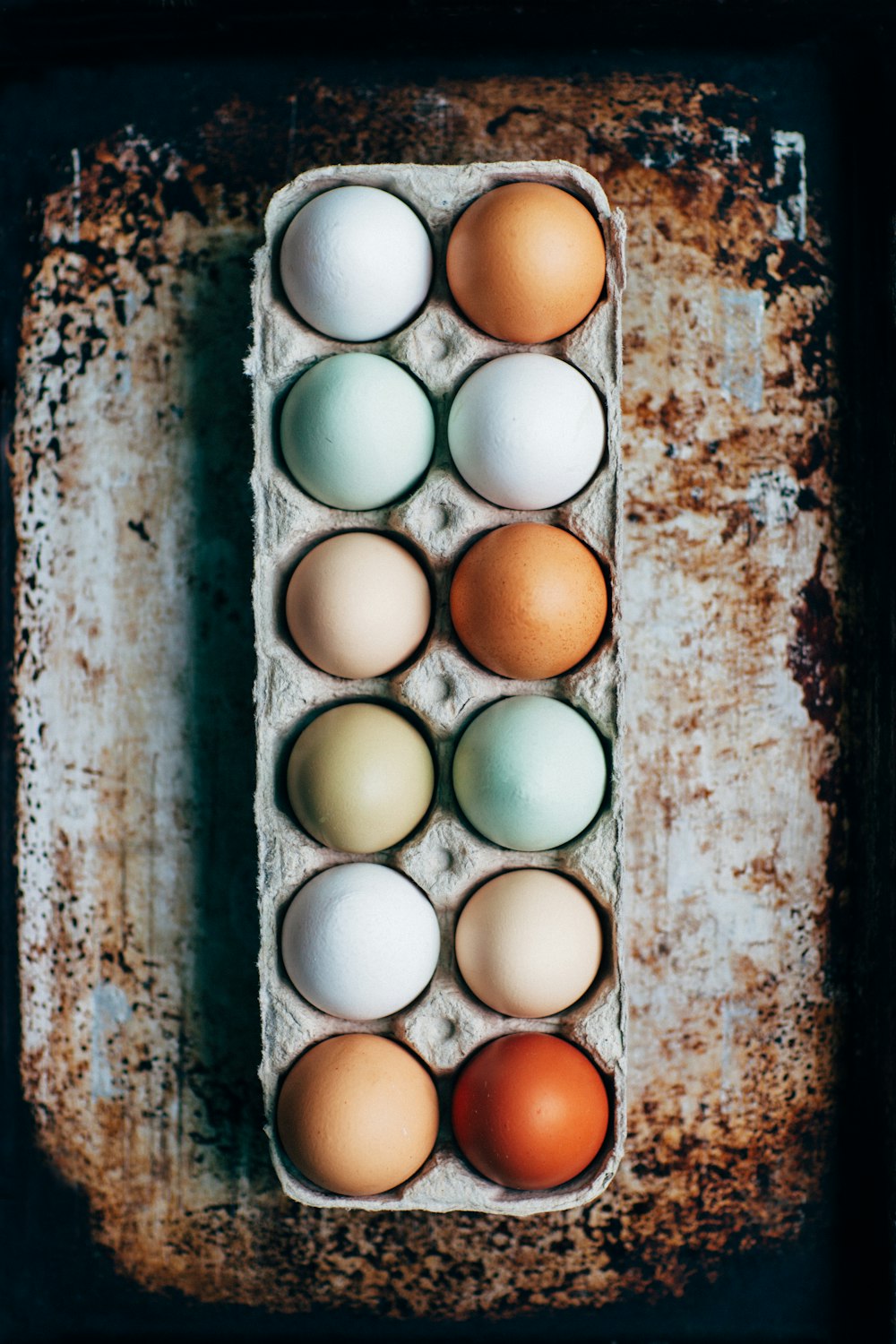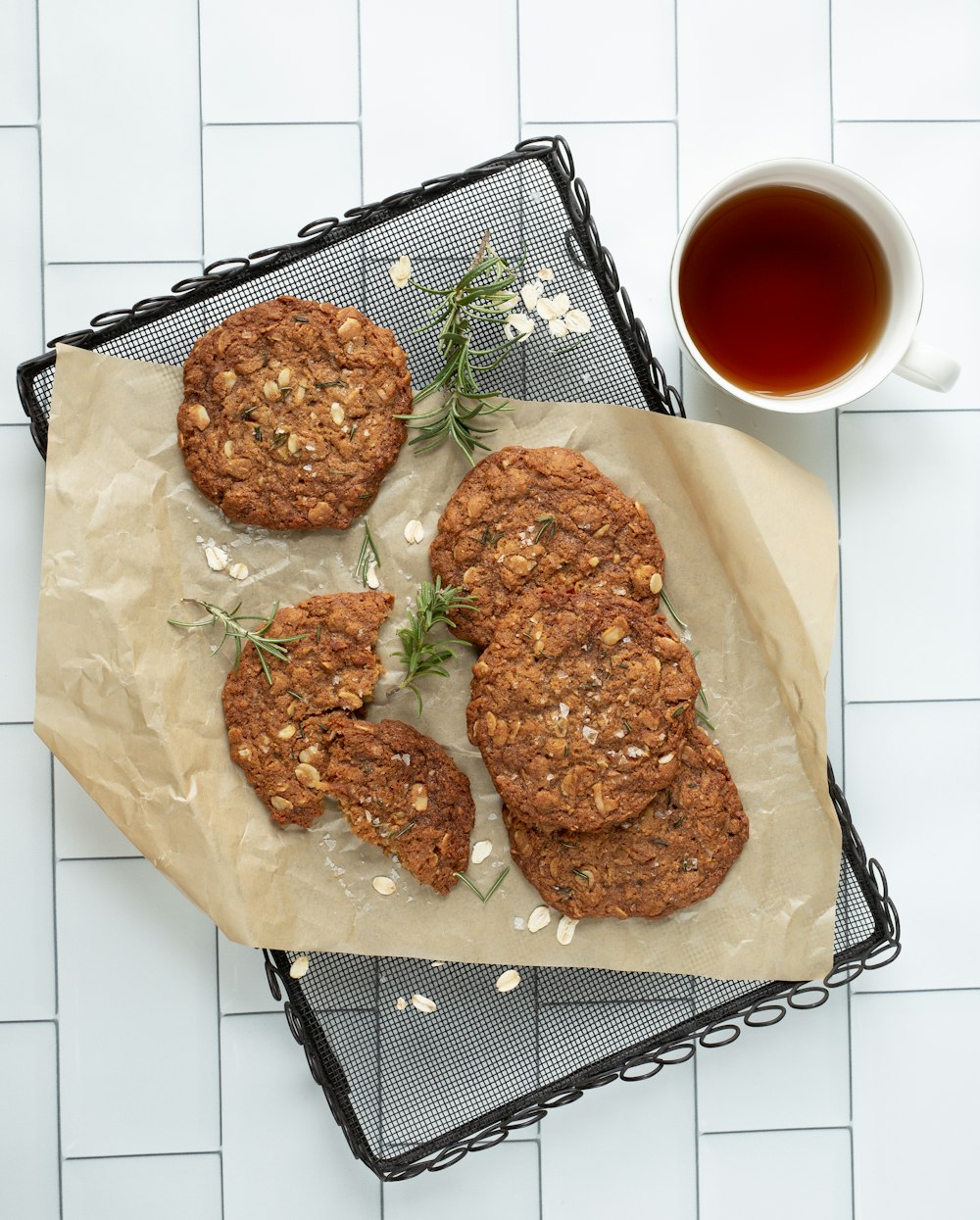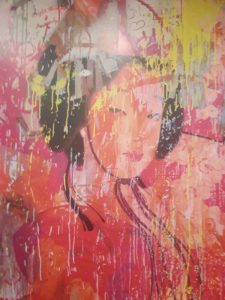

Our son was spending the Anzac Day long weekend with us in Perth. He had made a booking at our local teppanyaki restaurant for Friday night. During the afternoon we heard a community spread case of CV-19, the first in Western Australia for more than 12 months, had been detected. This resulted in us going into a three day lockdown, starting at midnight.
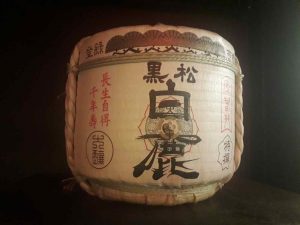

The restaurant assured us they’d be open but we had to wear masks except when we were eating. No problem. There weren’t many people there although the restaurant is usually full on Friday evening. We sat with a young couple, socially distanced, around the teppan, the metal grill plate.
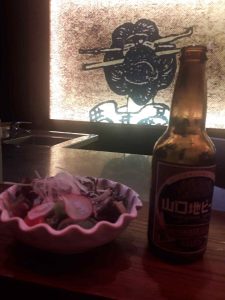

Teppanyaki is a post World War 11 style of Japanese cuisine which uses a hot iron griddle to cook the food. Teppanyaki comes from teppan, the grill, and yaki, meaning grilled or pan fried. But it is much more than just cooking.
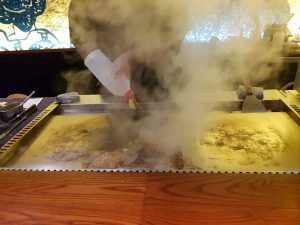

Teppanyaki is theatre! As we sat around the grill the performance began with knife swirling and tapping and energetic air slicing. This continues through the preparation of the food with the salt and peeper shakers, too. All very entertaining.
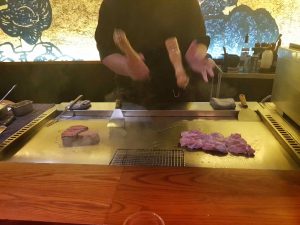

Teppanyaki is a very old Japanese method of cooking but the modern ways were influenced by American cuisine in the 1940s.
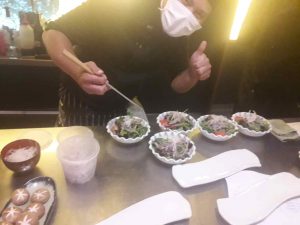

So what did we eat? I’d chosen the Chicken /Seafood Set menu and my husband and son had chosen the Steak/Seafood Set menu. The moody lighting is apparent is the photos!
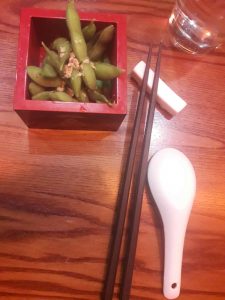

Both of these set menus started with edamame, boiled green soya bean plus shichimi salt. You split open the pod and eat the round bean.
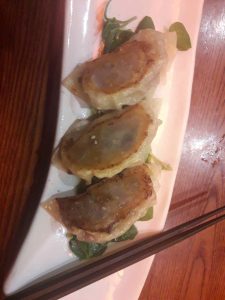

ENTREE Wagyu gyoza
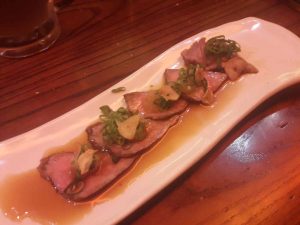

ENTREE Beef Tataki
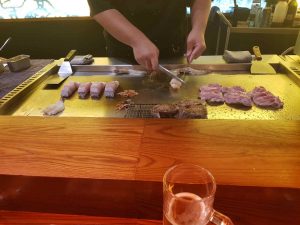

MAIN COURSES Cooking on the grill is Tenyaki Chicken and Black Angus Tenderloin. Both main courses also had prawn, scallop, squid and fish of the day served with them, plus salad, fried rice and miso soup.
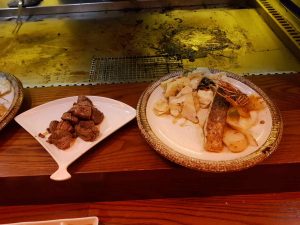

Black Angus Steak Tenderloin with prawn, scallop, squid and fish of the day plus vegetable. Delicious balance of colour, crunch and flavours.
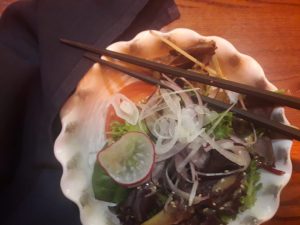

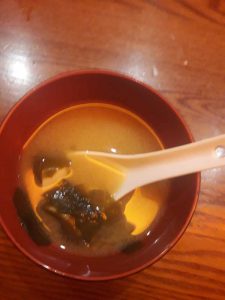

Miso soup with tofu and seaweed.
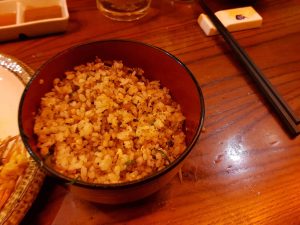

Fried rice. The set menu was a very generous sized meal and the rice was too much for me! The intensity of the heat and the speed of cooking resulted in heightened flavours. We had three dipping sauces and they were good, too. My husband and son drank Yamaguchi Weizen, wheat beer.
Theatre, anticipation, wonderful flavours, teppanyaki had it all and we really enjoyed our dinner. At midnight, Perth, where we live and Peel, the region to the south went into lockdown for three days. That has now been lifted due to no other cases being detected but we still have to wear masks outdoors.
EGGSHELLS
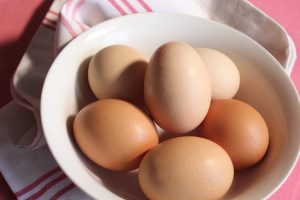

I was collecting eggs from the fridge to bring to room temperature to cook them and there was a conversation about the colour of their shells. There’s white shells, pink shells and light brown ones. The theory was that they came from different breeds of chooks (chicken) But do they?
And actually, that’s right! Different breeds lay different coloured eggs. There can be variation in the intensity of colour but the breed dictates the colour of the shells. The most reliable layers are preferred for commercial suppliers of eggs. In Australia they mostly have cream through to light orange, brown shells. In Australia the best commercial layers are Hy-Line Browns, ISA Brown and Hi-Sex Brown. These breeds are brown in colour and have a red comb.


ANZAC BISCUITS
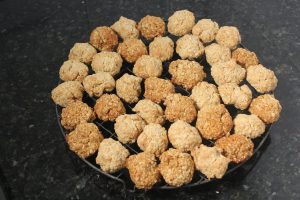

ANZAC biscuits are traditionally eaten on ANZAC Day in Australia. ANZAC stands for Australian and New Zealand Army Corps and ANZAC Day is celebrated 25th April every year in these two countries and in some other places in the world where these forces were engaged in a theatre of conflict or a Peacekeeping mission.
Apparently created during 1915 when ANZAC became a word during World War 1. There were recipes for rolled oats biscuits before this, such as nutties, brownies and munchies, but these are eggless and didn’t spoil on the ship journey from Australia.
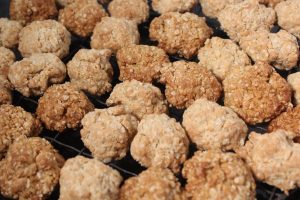

The recipe was originally called Soldiers Biscuits but after ANZACs landed at Gallipoli in 1915 they became known as ANZAC biscuits. The name is legally protected.
The ingredients include rolled oats, brown sugar, butter, golden syrup and baking soda and desiccated coconut. The ones I made are from a very old recipe in an 80 year old recipe book and didn’t spread the way more modern recipes spread. They still tasted very good!
DID YOU KNOW it is scientifically estimated plastic containers take 50-80 years to breakdown in landfill. They become micro beads, tiny plastic beads which don’t seem to completely disappear all.

